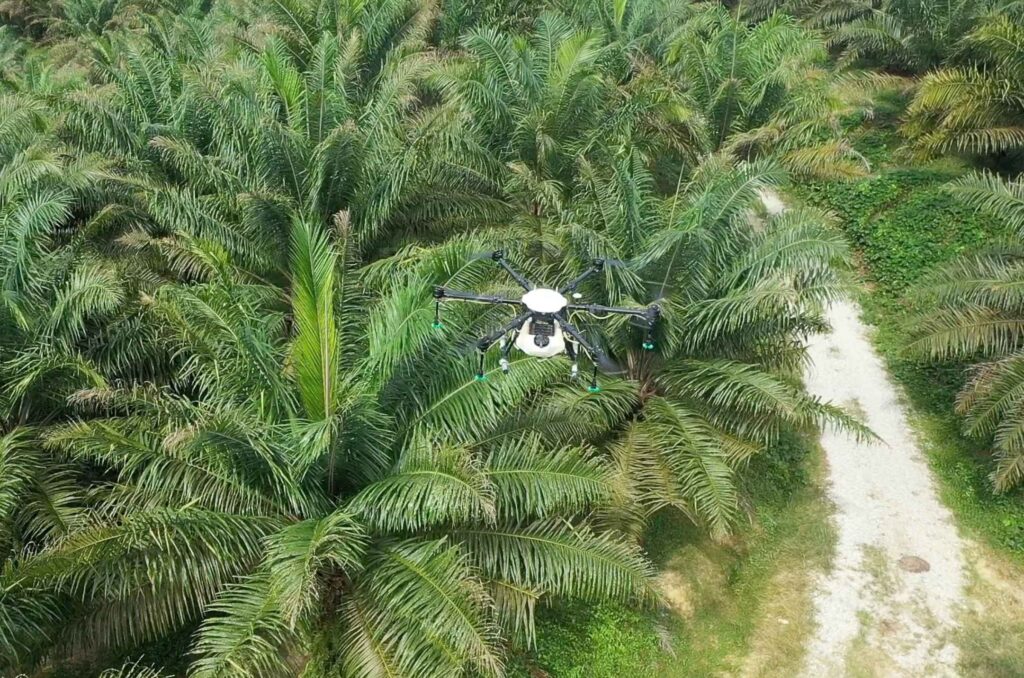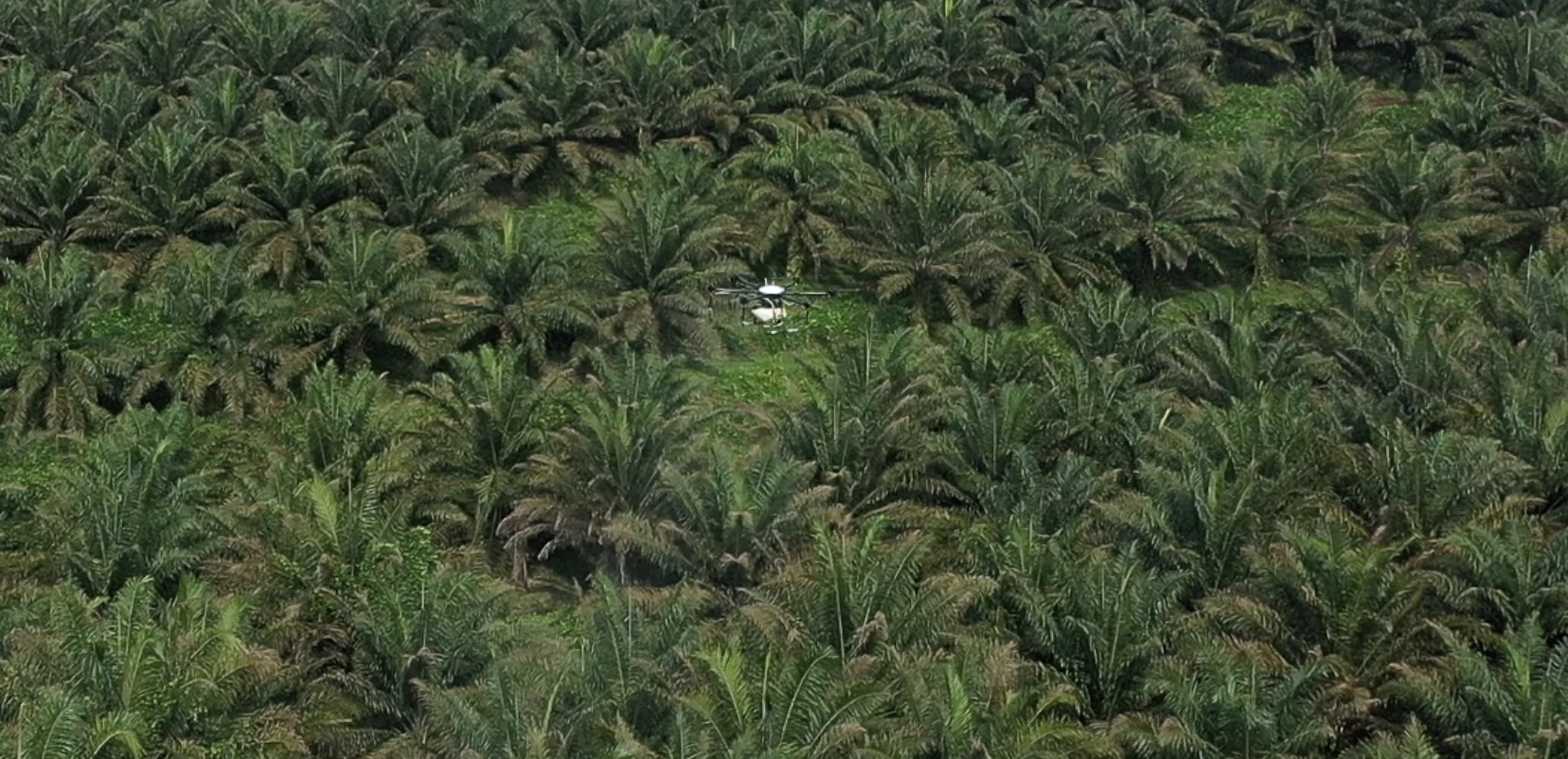In agriculture, decisions are measured not just by their cost, but by their consequence. One of the most critical, time-sensitive operations in field management is chemical spraying — a task often underestimated in complexity and resource demands. Traditionally, it requires labor-intensive coordination, faces constant environmental interruptions, and is prone to inefficiencies that accumulate across hectares.
But agriculture, as with all industries, is evolving. Among the most promising breakthroughs is drone spraying. A method that is reshaping how plantations approach efficiency, precision, and time management.
This is not simply a matter of replacing human effort with machines. Drone spraying represents a system-level improvement that challenges how we value time and respond to the increasing demands of modern agriculture.
The Problem with “Good Enough”
For decades, manual or tractor-assisted spraying has been the default, and to many, still feels sufficient. But “good enough” in a changing climate, with rising labor costs and shrinking margins, is not sustainable.
Let’s consider what traditional spraying actually involves: multiple operators, slow and repetitive coverage, terrain challenges, unpredictable weather delays, and inconsistent application rates. What begins as a field task quickly becomes a logistical burden, particularly for mid- to large-scale plantations.
The hidden cost? Time. Not just the hours lost in inefficient routines, but the delayed impact on crops when spraying schedules don’t align with actual field conditions. In agriculture, where timing is everything, that cost is often higher than any invoice.
Drone Spraying Reframes the Equation
Drone spraying doesn’t just reduce labor or chemical use — it redefines how fast and how well spraying can be done. The technology introduces a new pace of field operations, where coverage is measured in hectares per hour, not hours per hectare.
At its core, drone spraying:
– Executes precise application using pre-mapped flight paths
– Maintains consistent altitude even in sloped or uneven terrain
– Reduces contact with crops and soil, avoiding physical damage
– Operates independently of road access or dry ground conditions
But beyond the technical capabilities, what matters most is the ability to act immediately and accurately. When pest outbreaks happen, when rainfall disrupts the schedule, or when spraying windows narrow, drones are not just useful. They’re decisive.

Time: The Currency of Resilience
In agriculture, time is often treated as a secondary concern. It shouldn’t be. Time determines whether crops recover from an early-stage infestation. Time decides whether nutrients reach the root zone before evaporation. Time affects every yield-driving decision, from planting to harvesting.
Drone spraying offers temporal control. The ability to align intervention with need, not with manpower availability. And when applied across an entire production cycle, that control compounds. Faster spraying means quicker follow-ups, better crop health, and less disruption to adjacent activities like pruning or fertilizing.
In other words, drone spraying isn’t just about automation. It’s about agility.
Technology With Context: Not All Spraying Drones Are Equal
At Terra Agri, we’ve worked in the field — not just with data sheets, but with the unpredictable conditions of real plantations. That experience led us to develop our own spraying drone, designed specifically for Southeast Asia’s mixed terrain and field requirements.
We also distribute the trusted DJI Agras series, which we support through pilot training, technical assistance, and operational services. But tools alone don’t solve problems. What makes drone spraying successful is matching the technology to the local context, understanding when to fly, how to adjust droplet size, and how to integrate aerial application into a broader agronomic plan.
This is where many implementations fall short: drones are treated as one-size-fits-all solutions. But in reality, effective drone spraying depends on understanding the crop, the land, and the operational flow.
From Hours to Insights
Another often overlooked benefit of drone spraying is the data layer. Modern drones don’t just spray. They record. Flight logs, area coverage, and application rates become part of your decision-making system. Over time, this builds a more complete operational history, which improves forecasting, audit readiness, and accountability.
In the long term, drone spraying not only saves time. It returns insight, making every cycle smarter than the last.
Are You Still Spraying the Old Way?
The question isn’t whether drone spraying works. It’s whether your operation is ready to compete with those who already use it.
Manual spraying may still feel manageable, but it carries hidden inefficiencies: under-applied sections, rework due to uneven flow, and wasted hours when teams are grounded by terrain or rain. These losses rarely appear on spreadsheets. But they accumulate, season after season.
Drone spraying eliminates many of these friction points. It doesn’t ask for more of your time. It gives it back. And in a competitive market, time is no longer just a cost. It’s an edge.
FAQ: Drone Spraying with Terra Agri
Terra Agri provides professional drone spraying services for plantations and agriculture businesses across Southeast Asia. We handle the entire process — from planning and flight setup to spraying and reporting — using high-precision drones operated by trained teams. This helps you reduce downtime, labor, and chemical waste without investing in equipment upfront.
Yes. You don’t need to own a drone to benefit from aerial spraying. You can hire Terra Agri’s team to carry out spraying at your site. This is ideal if you want to try drone spraying before deciding to invest. We’ll handle everything for you, including mobilization, setup, and pilot operation.
Yes. Terra Agri offers two options:
Our own Terra Agri spraying drone – built for local field conditions, optimized for reliability and ease of use.
DJI Agras drones, including models like the T50 and T25 – ideal for high-efficiency spraying with advanced automation.
Most crops and terrains are suitable. Drone spraying is especially helpful in areas with:
– Large hectares to cover
– Slopes or muddy ground
– High labor dependency
– Tight spraying schedules
If you’re unsure, contact us — our team can assess your land and recommend the best spraying approach, whether service-based or equipment ownership.

